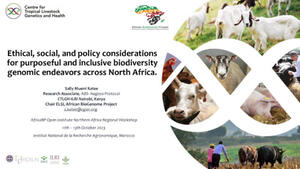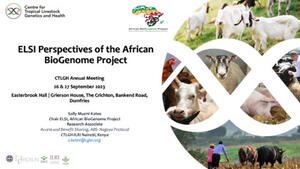
Analysis of genetic difference within and between of wild relatives of sorghum in Sudan, using SSRs
Abstract
Sorghum (Sorghum bicolor (L.) Moench) originated in East Africa specifically Sudan and Ethiopia where wild relatives of sorghum are widely distributed. The wild relatives harbored important genes. However they are often ignored and orphaned. This study aimed to explore genetic diversity among the accessions, and the results will enhance the utilization of wild sorghum in Sudan. 59 wild and cultivated sorghum accessions, representing three sorghum growing regions in Sudan: Gezira state (central), North Kordofan (Western), and the Gadareff area (Eastern). The materials were assessed for genetic diversity and population structure using a panel of 32 SSR markers. A total of 255 allelic variations were detected with a mean of 0.6721. The Polymorphic Information Content (PIC) value averaged 0.6301 showing the polymorphic and discriminatory nature of the selected markers. The populations showed little external gene-flow. Variations calculated with AMOVA are lower among populations (4%), moderate within individuals (23%), and higher among individuals within population (73%). A rooted neighbor-joining tree of four sorghum cultivars and 55 wild relatives revealed three distinct groups independent on their geographical origins. The results will be useful for future collection and utilization in genetics and breeding program.
Citation
Gamar, Y.A., Bashir, E.M., Kimani, W., Alaraidh, I.A., Shaikhaldein, H.O., Kyallo, M., Nzuki, I. and Skilton, R. 2018. Analysis of genetic difference within and between of wild relatives of sorghum in Sudan, using SSRs. Pakistan Journal of Botany 50(6):2231-2236.










